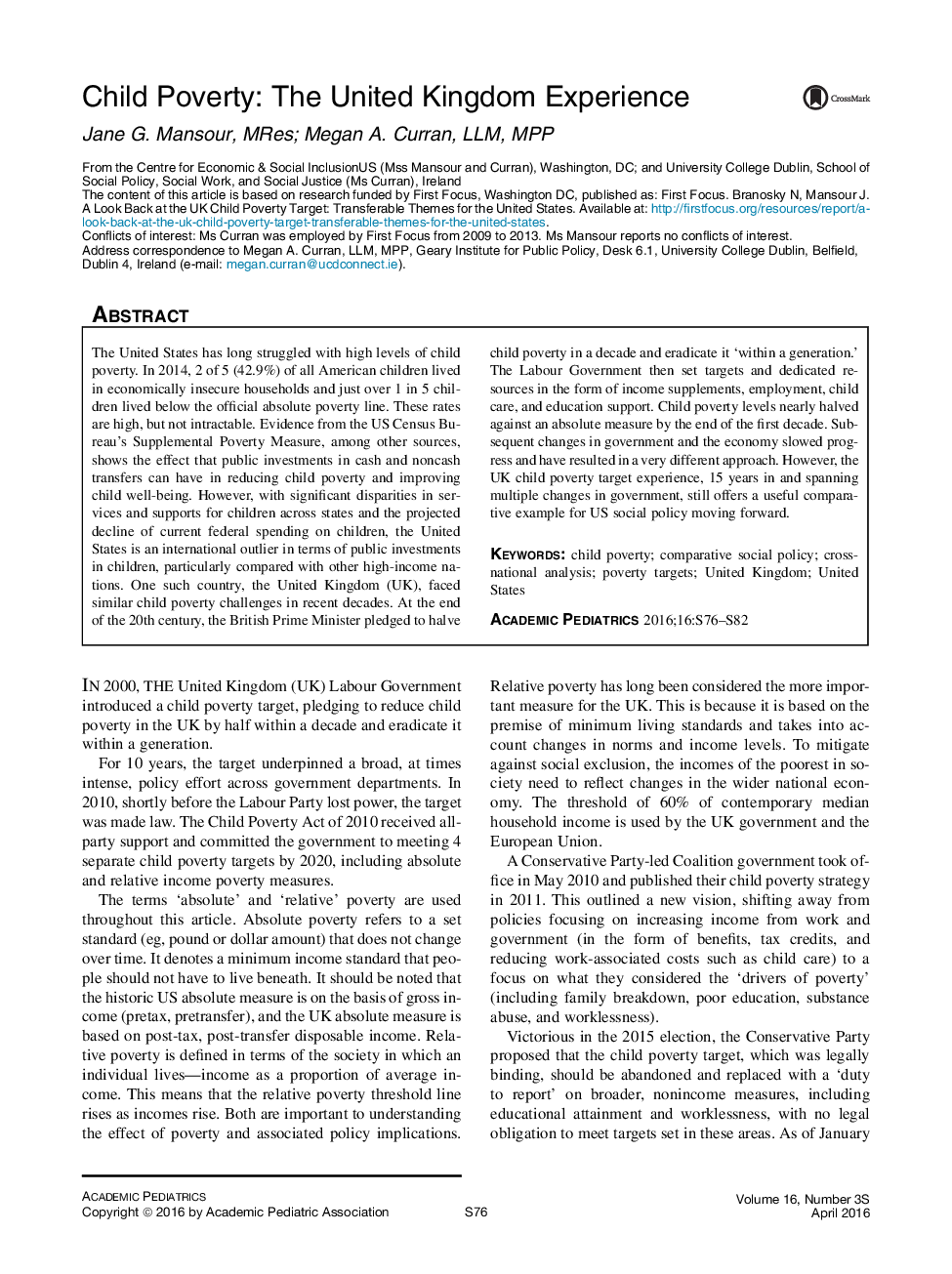| کد مقاله | کد نشریه | سال انتشار | مقاله انگلیسی | نسخه تمام متن |
|---|---|---|---|---|
| 4139328 | 1272202 | 2016 | 7 صفحه PDF | دانلود رایگان |
The United States has long struggled with high levels of child poverty. In 2014, 2 of 5 (42.9%) of all American children lived in economically insecure households and just over 1 in 5 children lived below the official absolute poverty line. These rates are high, but not intractable. Evidence from the US Census Bureau's Supplemental Poverty Measure, among other sources, shows the effect that public investments in cash and noncash transfers can have in reducing child poverty and improving child well-being. However, with significant disparities in services and supports for children across states and the projected decline of current federal spending on children, the United States is an international outlier in terms of public investments in children, particularly compared with other high-income nations. One such country, the United Kingdom (UK), faced similar child poverty challenges in recent decades. At the end of the 20th century, the British Prime Minister pledged to halve child poverty in a decade and eradicate it ‘within a generation.’ The Labour Government then set targets and dedicated resources in the form of income supplements, employment, child care, and education support. Child poverty levels nearly halved against an absolute measure by the end of the first decade. Subsequent changes in government and the economy slowed progress and have resulted in a very different approach. However, the UK child poverty target experience, 15 years in and spanning multiple changes in government, still offers a useful comparative example for US social policy moving forward.
Journal: Academic Pediatrics - Volume 16, Issue 3, Supplement, April 2016, Pages S76–S82
